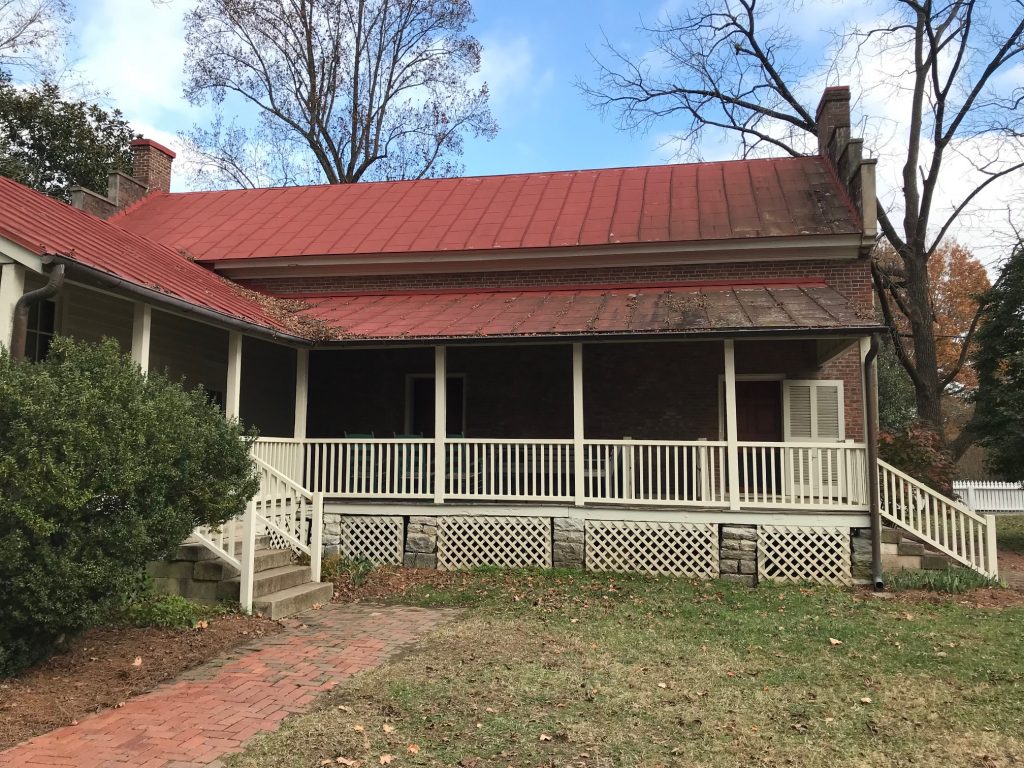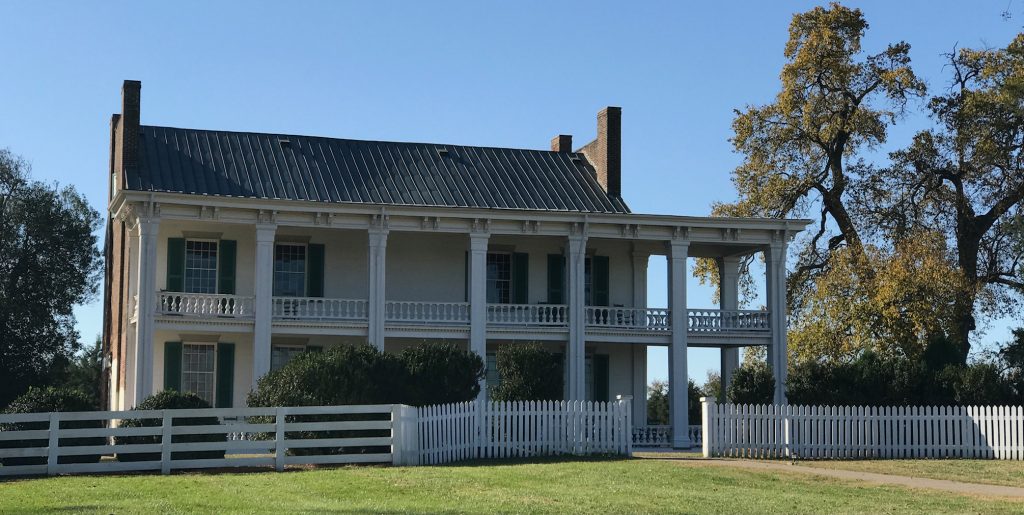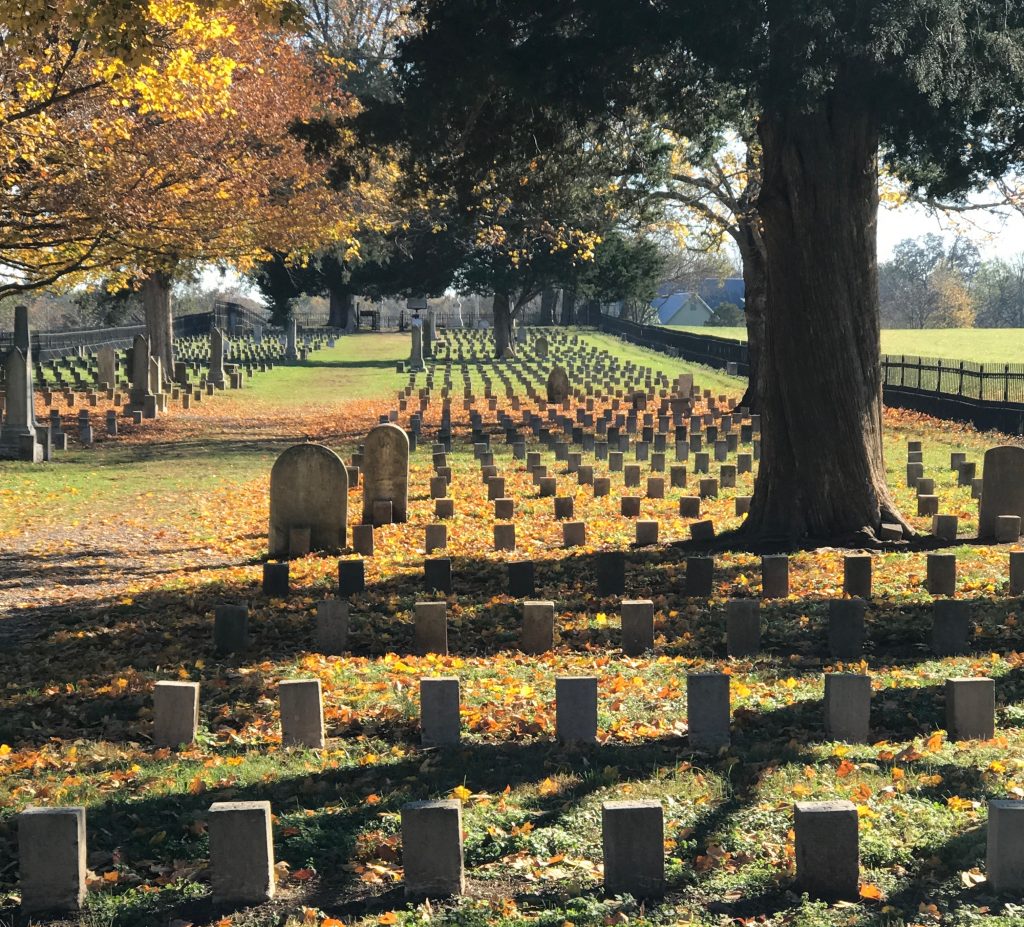Many times when we tour historic venues we lose sight of the fact that actual people lived these events. Sometimes we slip into movie mode, viewing history “as a made up story”. Yet there are times when we’re moved. We gain an understanding of the emotions and actions of a person who not only witnessed but contributed to history. My trip to Franklin, TN was one of those occasions where I actually felt history.
Years ago I heard a presentation on the Battle of Franklin at a Civil War Round Table. The presenter was a dynamic speaker with extensive knowledge of his topic and strong Confederate ties. The intense moments of the battle he described were mesmerizing. Learning about the monumental losses of the Army of Tennessee and the battle’s lasting impact on the citizens cemented my hope to one day visit Franklin. I wanted to see first hand the place that left such an impression on me from that program long ago. Much later I had the opportunity to finally fulfill that wish. I made the trip to Franklin, Tennessee.
To set the stage, the Battle of Franklin was fought November 30, 1864. The Army of Tennessee was led by Lieutenant General John Bell Hood. His command of 30,000 men were positioned south of the tiny town of Franklin. On the Union side, Major General John A. Schofield led the Army of Ohio with roughly the same number of men. The significant difference between the two was where the Union army was positioned. Forming a half-circle around the southern edge of town, Schofield’s men were able to establish a strong defense putting up formidable breastworks and securely settling in for the anticipated attack by Hood and his army.
Even though Hood was advised by fellow officers the attack was too risky, the rebel offensive was launched at 4pm just before a 4:30 pm sunset. The Confederates marched along two miles of open ground up the Columbia Pike toward Franklin. The Army of Tennessee was immediately pounded by Union cannon fire but Hood could not return the assault since he had only one battery. Almost all of his artillery had yet to arrive. Even with the Union army secure behind breastworks and firing artillery, the Confederates broke the initial Union line. The fighting swelled into the gardens of the Carter home located on the outskirts of town. As the family huddled in their basement the battle raged in their backyard. The fighting was fierce and at times even hand-to-hand. After a grisly five hour battle the overwhelming odds finally caught up with Confederates. Suffering severe losses Hood’s army fell back. Through the years many have questioned John Bell Hood’s decision to attack the Union army that day. Later known as “Pickett’s Charge of the West,” the Battle of Franklin was a Confederate disaster.

The estimated casualties for the Confederates that day totaled 6,252 men with 1,750 killed, 3,800 wounded and/or 702 missing and captured. The Union army fared much better with a total of 2,326 casualties which included 189 dead, 1,033 wounded, 1,104 missing and/or captured.
The Battle of Franklin slaughtered the Army of Tennessee. It never regained its strength throughout the rest of the war. In fact many refer to this battle as the beginning of the end for the Confederacy.
With that bit of background about the battle my husband and I travelled to Franklin Tennessee. It’s interesting to note this is not a “regular” battlefield visit. While you can take a driving tour of the area and make the planned stops at certain locations, there are not acres and acres of battlefield set aside with numerous monuments dedicated to regiments and corps that fought there. In fact most of the two mile stretch of Columbia Pike where the Army of Tennessee advanced is now residential. Neighborhoods fill in the area where Confederate soldiers were mowed down by Union artillery. I wonder if residents still today find small relics of that long ago battle when they plant spring flowers or new shrubs.
The Carter House where intense fighting took place still stands with a small amount of surrounding grounds. We toured the home now managed by the Battle of Franklin Trust. It’s a fascinating place. The 1-1/2 story brick home built by Fountain Branch Carter in 1830, is restored to the Civil War era. Two extra bedrooms were added to the back of the house to make an “L” shape with a wonderful wrap-around back porch. The back porch still displays the scars of bullet holes and artillery fire from that fateful day. The kitchen is a separate brick building about 10-12 yards behind the house. One of the Carter sons who huddled with the family in the basement during the battle counted 57 bodies laying in that small area between the house and the kitchen that next day. As I stood on that porch and looked at the small expanse of yard I couldn’t imagine 50+ bodies in a bloody, tangled mess before me. I could barely visualize the horror of that scene which had to be seared in each and every family member’s mind.
This tour was striking for me. Here’s a hard working, self made family. The patriarch, Fountain Branch Carter built a home and a living for his family. He did not support either side in the war. Yet his sons joined local Confederate regiments. His home was confiscated and used as a Union headquarters during the battle. He and his family, along with a few neighbors sheltered in the basement while what sounded like the end of the world swirled outside their door.
This experience really brought into focus for me that real people lived these events. There were bloody bodies laying in their back yard. Bullet holes in their porch and out buildings and wounded soldiers stretched out on every surface of their home. The most incredible story was that a son, Tod Carter was serving with the 20th Tennessee and had a pass for home given him November 28. Yet he chose not to use it and stayed with his unit to fight since the battle was shaping up to be fought near his home. Tod Carter was shot nine times and lay dying on the battlefield when his family went to search for him. They brought him home to die two days later.

But my Franklin experience didn’t end there. We traveled the short distance southeast of town to the Carnton Plantation. Owned by John and Carrie McGavock this beautiful home was restored to it’s striking 1860s grandeur. A spacious, prosperous estate it was rocked that November 30. As the battle raged a few miles from them, wounded Confederate soldiers were brought to the home. Commandeered as a field hospital hundreds of injured were treated by surgeons in every spare inch of the home. Men were laid under the stairs, in the hallway, foyer, in every available nook and cranny, with only one room set aside for the family of five.
Following our guide through the home she pointed out the blood stained floors. Each room bearing witness to those who fought this gruesome battle. The massive stain in a corner of a bedroom assumed to be from a pile of discarded limbs. The bloody ring of a bucket that was most likely near a surgeons feet, stains large and small attesting to the carnage.
The back porch of the home is a beautiful two story addition. It is grand and glorious and held the remains of four Confederate generals in death. The spacious lawns of the plantation were filled with the wounded as the house filled with the severely injured. Those soldiers laid in the yard awaiting their turn under the surgeon’s scalpel.
Again I became aware of how actual people lived these events. Carrie McGavock, her home swallowed up by bleeding, dying men offered her towels and linens as bandages. She and others helped with treating those injured as best they could. One soldier noted Carrie’s skirt stained in blood as she went from wounded to wounded. The family cared for, cooked for and ministered to these soldiers for weeks, even months after the battle. Their home, a field hospital for an extensive period of time.

If that wasn’t enough the family set apart two acres of their land for burial of those Confederate soldiers slain in the Battle of Franklin. A small group of men were hired in early 1866 to exhume and rebury those fallen soldiers. Carrie McGavock kept a detailed book on those reburied in the McGavock Confederate Cemetery. 1,481 soldiers remains were reinterred on the property. The names are not known for all those buried, yet their final resting place was held sacred with love and honor by Carrie McGavock.
Our time spent at the Carter House, Carnton Plantation and McGavock Confederate Cemetery was informative and poignant. The realization that actual people lived and witnessed these events was really brought home to me. Little did they realize they were living history. Never would they imagine their story would move future generations. As family historians and genealogists let’s always tell their story. Whether they are our ancestors or those who weathered the storms of the past. Let’s never forget those who came before. We need to tell their story. All history is only one generation from extinction.

